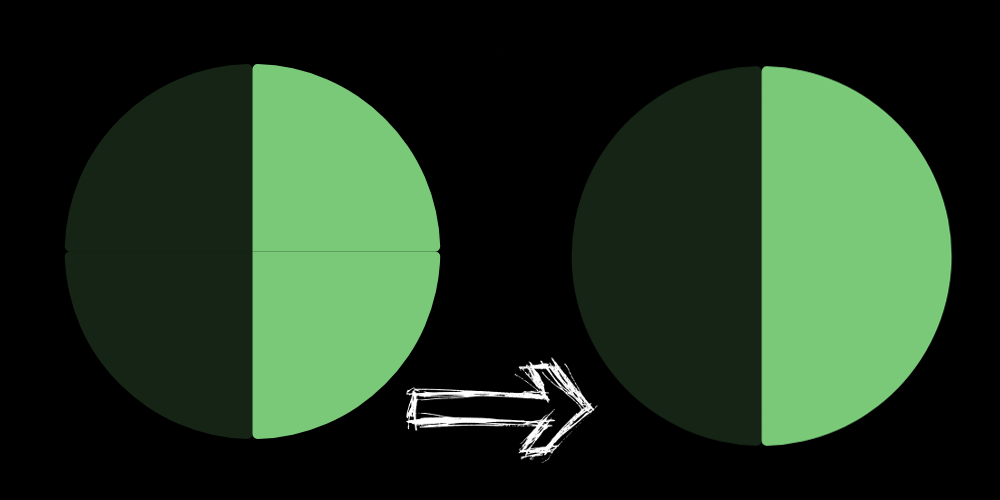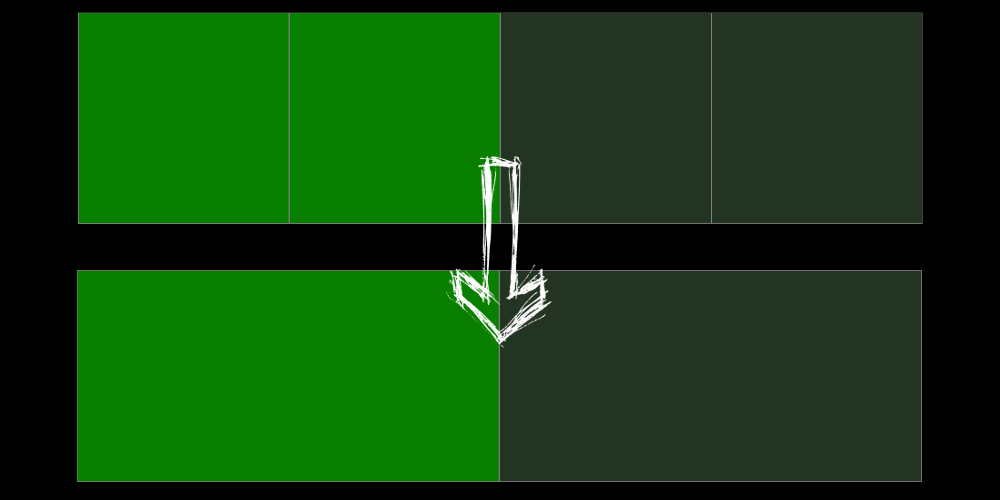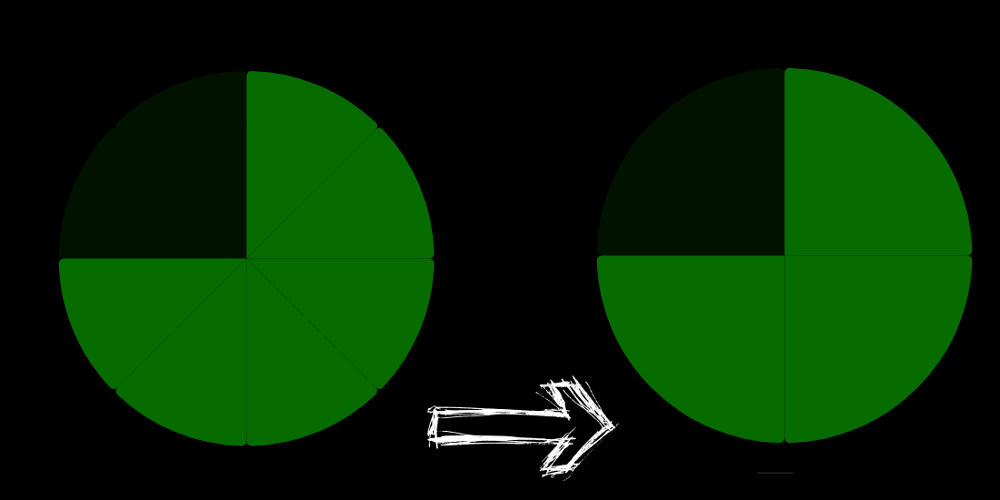Quick Access
Introduction
Simplifying a fraction means replacing it with an equivalent (equal) fraction whose numerator and denominator are the smallest possible. In other words, it is dividing the top and the bottom by the largest possible number.
To know how to simplify a fraction will allow us, among others, to:
- Better visualize and compare quantities.
- Manipulate smaller numbers.
- Simplify calculations.
- Understand percentages (%).
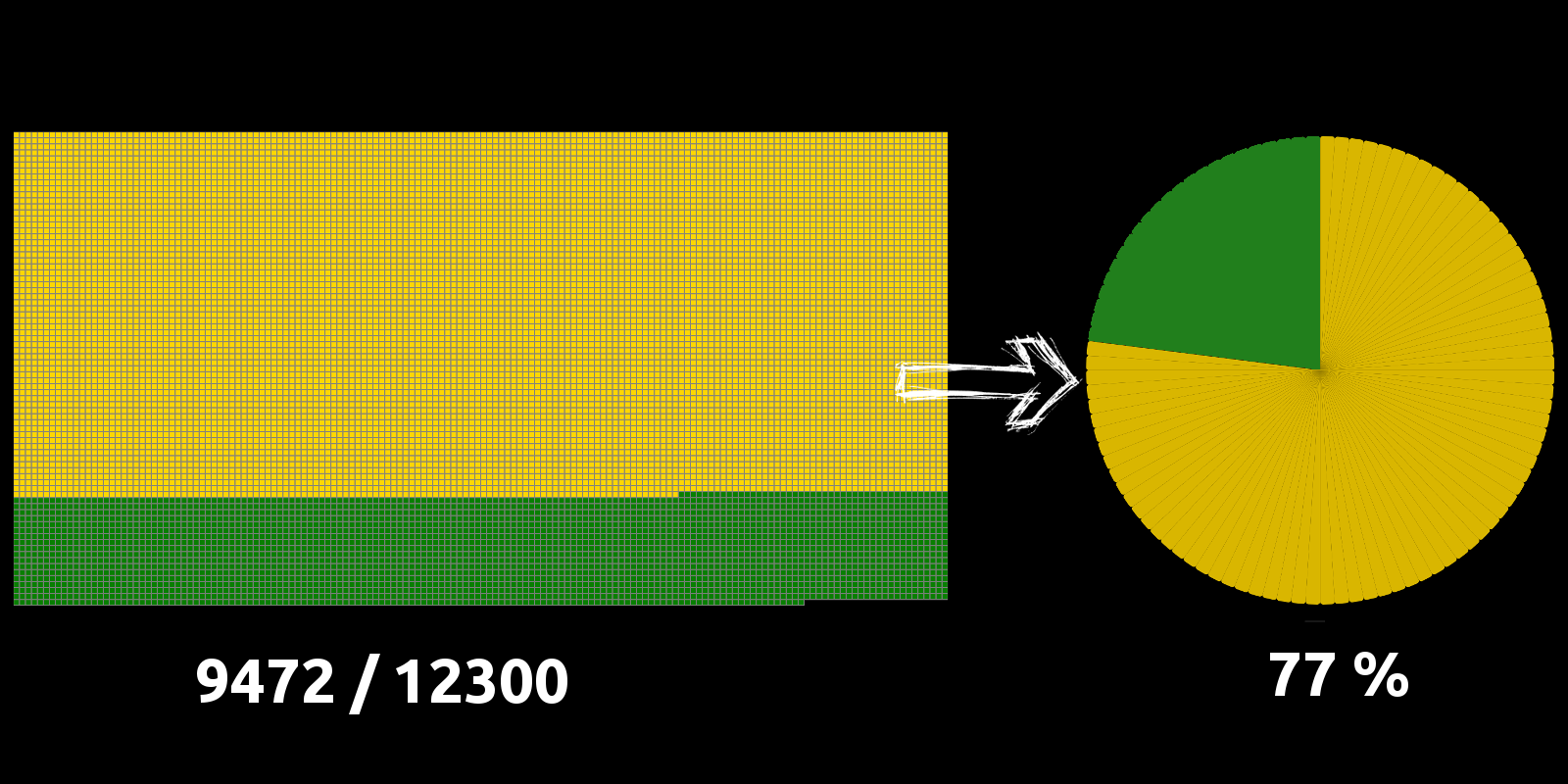
This simplification exercise is often problematic. It becomes much simpler once we visualize what a fraction is and how it works.
Reminder
The number above, at the numerator, represents the number of shares we take. The number below, at the denominator, represents the number of total shares.
If we multiply or divide the numerator and the denominator of a fraction by the same number: we get an equivalent fraction (equal).
We never divide by 0!
The minus sign can be moved all over the fraction: $$\frac{-a}{b}=-\frac{a}{b}=\frac{a}{-b}$$ $$\frac{-a}{-b}=\frac{a}{b}$$
The game
Objective
Divide the numerator (top) and denominator (bottom) of a fraction by as many as possible (integer domain). The fraction will then be irreducible.
Examples of simplifications
Tools (the first three will be enough to start)
|
|
Additions
Warning, if we are in the presence of an addition in the fraction, we will not be able to simplify easily (cf. Adding/Subtracting fractions).
Find the solution with the GCD
GCD
To always simplify a fraction as much as possible, it is enough to find the greatest common divisor, or GCD, of the numerator and denominator. This GCD is the largest integer that divides the two parts of the fraction.
If we look for the GCD of 20 and 30, we could list all possible divisors (or multiplications) of these numbers. Let's take the time to do it for this time:
|
|
Here, 10 is the largest number that composes both 20 and 30: it is the GCD.
Simplify the fraction
Now that we have found our GCD, all we have to do to simplify a faction is to bar the common factors from the top and the bottom (see Tool # 2). With 20/30 : $$\frac{20}{30} = \frac{2 * \cancel{10}}{3 * \cancel{10}} = \frac{2}{3}$$
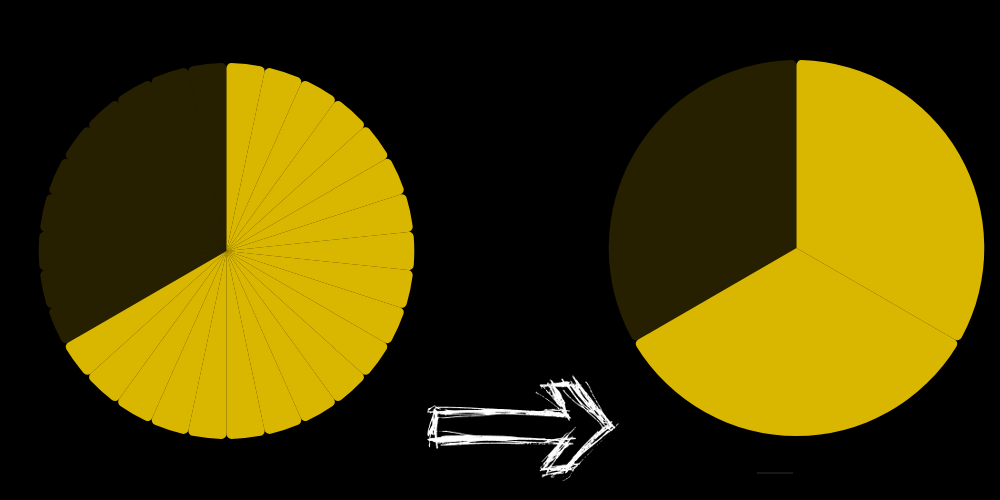
This is exactly like dividing the numerator and the denominator by this number: $$\frac{20}{30} = \frac{\frac{20}{10}}{\frac{30}{10}} = \frac{2}{3}$$
Checking our solution
As usual, we do not forget to check the solution. We multiply the new numerator and the new denominator by the GCD to see if we get back on the original fraction.
$$ \frac{2 * 10}{3 * 10} = \frac{20}{30} $$ We find the initial fraction.
Always find the GCD with Euclid's algorithm
To always find the GCD we will use Euclid's algorithm. Do not panic, it's not complicated! We just need to know how to divide a number.
The procedure is as follows: - Perform the Euclidean division of the greatest number (noted a) of the fraction on the smallest number (noted b) and keep the rest (noted r). - As long as the rest is different from 0, we reiterate the division replacing a by b and b by r.
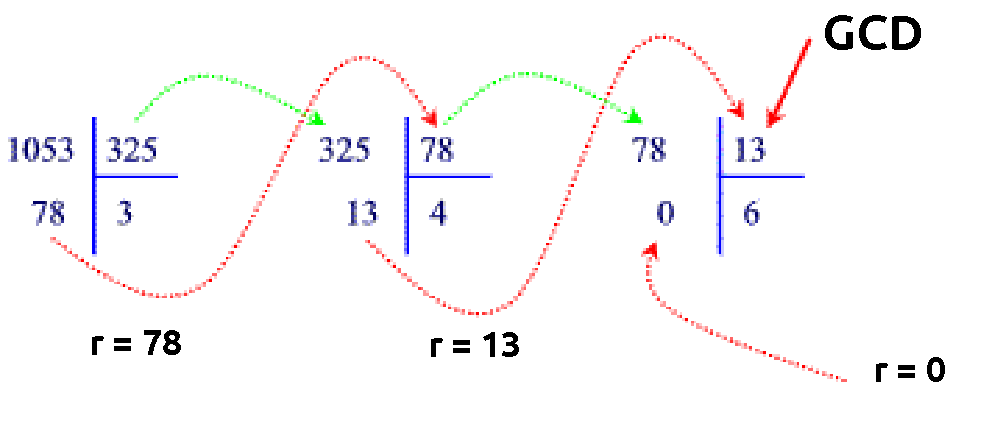
We will then be able to write: $$1053 = 81 \color{green}{\textbf{ * 13}}$$ $$325 = 25 \color{green}{\textbf{ * 13}}$$
Congratulations, we can now simplify our fractions! Feel free to visualize and simplify fractions using Globo and its explanations.

 Play online
Play online
 Step-by-step simpliflier
Step-by-step simpliflier
 Worksheets
Worksheets
